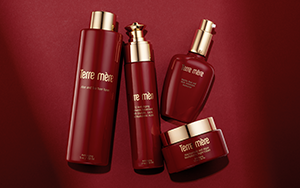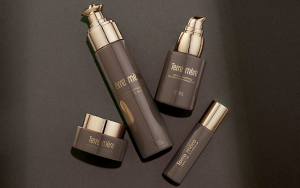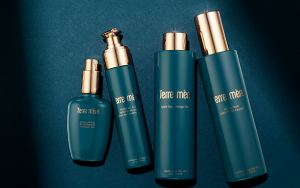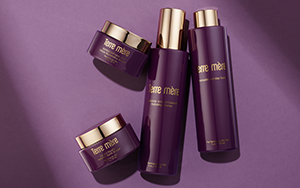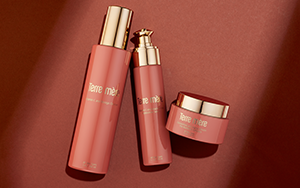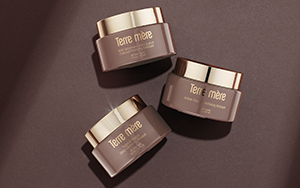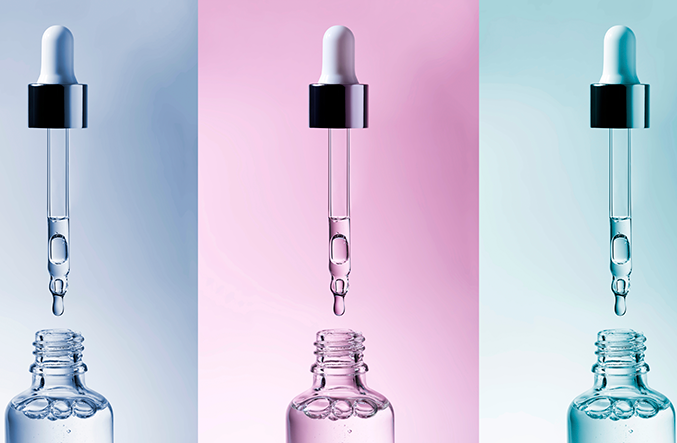
Facial acids are stealing the skincare spotlight these days — and for good reason! Boasting powerful antioxidant properties and anti-aging benefits, facial acids are the key to maintaining a healthy, natural glow. But the world of facial acids is complex, and there are so many amazing ones to choose from. With all their various superpowers and application methods, it can be difficult to decipher exactly which acids to use and when. Let us break it down for you.
What Are Facial Acids?
Facial acids are active ingredients that cause measurable changes in the skin, both visibly and scientifically. Essentially, they’re powerful skincare enhancers that produce dramatic effects, some of which you can see instantly (thanks, hyaluronic acid!). When incorporated into other skincare formulas, facial acids enable other active ingredients to more easily penetrate the skin, which stimulates the production of elastin and collagen. More elastin and collagen means stronger bonds between skin cells, ultimately improving the skin’s elasticity and texture.
Sounds better than the kind of acid you probably had in mind, right? While this may be true, don’t jump the gun on facial acids just yet. You’ll want to emphasize certain acids depending on your age, given that different acids tackle different skin issues.
For example, it’s best practice to start using AHAs and BHAs in your mid-twenties. (More on those later). AHAs and BHAs help unclog pores and exfoliate the skin, reducing the appearance of acne, which is a prime concern for people in their twenties. Once you hit your thirties and beyond, you’ll want to shift gears to acids with hydrating and anti-aging benefits, like hyaluronic acid and vitamin C.
How Do I Apply Them?
Before applying a skincare acid, ensure that it’s compatible with your skin type. Test the formula on your inner arm and wait 24 to 48 hours before applying it to your face. Don’t continue using the acid if your skin appears red, itchy, or feels like it’s burning. It’s also worth double-checking that the acid is lower than 10% in concentration, and above a 3.5% pH level.
You can commonly find acids in products such as serums, face creams, and body wash. Test the product by using it only once or twice a week, then up your usage once you’ve confirmed your skin won’t react.
As a general rule of thumb, always apply sunscreen after using a facial acid. Though acids are safe, they do cause some skin sensitivity, leaving it more susceptible to damage caused by UV rays.
The Facial Acids Hall of Fame
There are tons of acids used in skincare formulations. These are some of the most loved in the skincare world, and for good reason — the effects are powerful and, in some cases, almost immediate.
Hyaluronic Acid
Arguably one of the most popular facial acids on the market, hyaluronic acid is cherished for its intense hydrating properties. The effects of hyaluronic acid are almost instantaneous — just a few minutes after application, you’ll notice your skin looking firmer and brighter than before. This is a fantastic option if you’re looking to tighten up sagging skin and reduce fine lines.
Hyaluronic acid is a clear, gooey substance that’s naturally occurring in the body. It makes up parts of our skin, connective tissue, and eyes. Unfortunately, it’s also a prime ingredient in rooster combs, which is where the acid is often sourced from. However, vegan alternatives exist; we source ours from the Caesalpinia Spinosa plant, a thorny shrub native to Peru. Hyaluronic acid is gentle and beneficial for all skin types.
Alpha Hydroxy Acid
Better known as AHAs, alpha hydroxy acids are a powerful exfoliant that break the bonds between dead skin cells to improve skin texture and complexion. AHAs act on the cells of the skin’s surface, which makes them effective in reducing fine lines, dark spots, and acne scars. They are typically best used on dry skin with surface-level conditions.
Lactic Acid
Lactic acid is a hydrating AHA commonly derived from milk. Terre Mere chooses to source lactic acid from vegan alternatives, like flax seeds. It’s a natural exfoliant, loosening the bonds between dull, dead skin cells to reveal the shiny new cells underneath. As a result, lactic acid is used to brighten and smooth out skin tone. It can also help reduce the appearance of fine lines and wrinkles. Because lactic acid possesses a peeling effect on the skin, sunscreen is key when using this ingredient.
Malic Acid
Like lactic acid, malic acid is another natural exfoliant that promotes cell turnover, exposing healthy skin cells with a radiant shine. Malic acid is also a great option for acne-prone and sensitive skin, since it’s typically less irritating than other acids are. (However, you should still wear lots of sunscreen when using malic acid). Additionally, it acts as a humectant, which traps moisture into the skin and nourishes the skin’s protective outer barrier. It also reduces the appearance of wrinkles and fine lines. Malic acid comes from vegan sources, such as apples and cherries.
Alpha-Lipoic Acid
An antioxidant derived from broccoli, alpha-lipoic acid protects cells from damage and thereby preserves your natural, radiant glow. Thanks to its antioxidant properties, ALA is known as a powerful anti-aging ingredient. It also helps protect skin cells from UV damage caused by sun exposure and other external stressors. What’s more, ALA also possesses anti-inflammatory properties, which can help with redness, as well as healing cuts or scabs.
Glycolic Acid
Of all the acids, glycolic acid has the smallest molecule size. This means it’s also the most effective at penetrating the skin, which is good news — because this miracle molecule seems to do it all. Glycolic acid is derived from sugar cane and is the most popular AHA used in skincare. It’s known to exfoliate the skin and reduce fine lines, prevent acne, increase skin thickness, and even out skin tone and texture. Use of glycolic acid can lead to sun sensitivity, however, so be sure to put on extra sunscreen when using products that contain this ingredient.
Salicylic Acid
It’s best known for its use as an anti-acne treatment, though it’s most potent against mild acne (whiteheads and blackheads). Applying salicylic acid regularly can also help prevent future breakouts. Given its exfoliating properties, salicylic acid penetrates deep into the skin and dissolves dead skin cells clogging your pores, which contributes to acne. Be sure to apply sun protection when using products with salicylic acid, since this ingredient can lead to heightened sun sensitivity.
Ascorbic Acid (Vitamin C)
You’re familiar with Vitamin C as an essential nutrient, but it’s also a world-class skincare ingredient, too. Its claim to fame lies within its ability to brighten the skin and protect it against harmful external stressors. These characteristics make Vitamin C a potent anti-aging solution, minimizing fine lines and dull, sagging skin. Better yet, it’s great for all skin types.
Azelaic acid
Naturally found in grains like barley, wheat, and rye, azelaic acid possesses antimicrobial and anti-inflammatory properties, making it an effective treatment for conditions like acne and rosacea. It works by cleansing pores of bacteria and encouraging cell turnover, which allows the skin to heal more quickly and minimize scarring. But because azelaic acid can thin your skin, it’s important to wear extra sun protection while using it.
Though they might sound scary at first, facial acids are anything but. There’s an acid for almost any skin concern, making them a fantastic resource for updating your skincare regimen as your skin naturally changes. Most are naturally occurring and sourced from plants, and better yet, they’re powerful skincare saviors with proven results.

